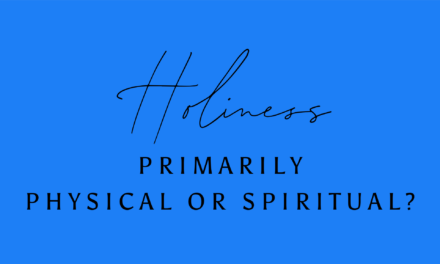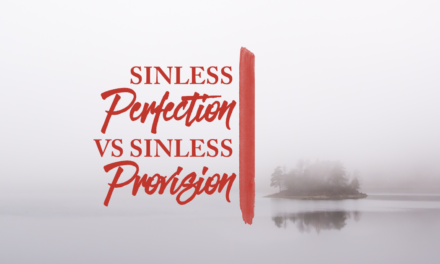"Making holiness primarily consist of externals confuses what holiness is versus what holiness does."
The Scripture upholds true godliness and holiness with statements like “Godliness is profitable unto all things” (I Tim. 4:8), and warns against the counterfeit, with statements like “Having a form of godliness, but denying the power thereof: from such turn away” (2 Tim. 3:5). While the context of 2 Timothy primarily addresses counterfeit religion among the unsaved, by way of application it addresses a potential counterfeit holiness among the saved. There is a counterfeit holiness to be guarded against.
True holiness is accessing the holy life of Christ in you. The essence of true holiness is a person—the holy life of Jesus animating your personality. The evidence of this true holiness, or fruit of the Spirit of Jesus, is “love, joy, peace, longsuffering, gentleness, goodness, faith, meekness, temperance” (Gal. 5:22). The ninth grace listed is “temperance” or Spirit-energized self-control. This restraint will inevitably involve “externals.” When you are led by the Spirit, you obey His leadership regarding external lifestyle applications. This surrender is vital to holy living, or living in the Spirit. However, when you do, you’re depending on the Spirit, not the applications. The essence—accessing the Holy Life—is the issue, not the external applications.
“Temperance” is one-ninth or 11% of the expressions of the fruit of the Spirit (or if the fruit of the Spirit is essentially love, making the following eight graces express that love, then one-eighth or 12.5%). Yes, Spirit-led self-restrained living is an expression of holiness, but it is not the essence. Sprit-led expressions of holiness are important, but what is primary is the essence of Christ’s life, the true source of holiness.
Counterfeit holiness makes holiness primarily consist of a set of external applications. This is a major error for at least three reasons.
- Externals can be imitated by unsaved moralists. Therefore, externals are not the essence of holiness, though they can be expressions of holiness.
- The given set of external applications varies from person to person and group to group. The taboos and “big” issues vary even in conservative churches. Therefore, these external applications cannot be the core issue of true holiness. While the essence of holiness is absolute, the applications within that absolute vary. Therefore, the applications must not be made primary.
- Making holiness primarily consist of externals confuses what holiness is versus what holiness does. Defining holiness by what it does leads to works-dependence. Defining holiness by what it is leads to God-dependence.
Genuine holiness accesses the holy life of the indwelling Christ—the fruit of the Spirit. The primary issue is the person of holiness, not the expressions of holiness. Any emphasis of holiness other than the Holy One is an error and produces counterfeit holiness.
Next week, we will address some marks of counterfeit holiness.

John Van Gelderen
Post Author
About This Blog
Hello, I’m John Van Gelderen. I am an evangelist and the president of Revival Focus Ministries, an organization for the cause of revival in hearts, homes, churches, and beyond, and for evangelizing. This blog is focused on experiencing Jesus. I believe in order to really live, you must access and experience the very life of Jesus Christ.











So…in other words abide in the Vine (private access of Holiness) and the Husbandman will bring forth the Fruit (public display of Fruit). My responsibility, His promised result.
Yes, faith accesses grace. God-dependence accesses Spirit-enabling. Abiding is the picturesque word for believing. As you take steps of faith by trusting to obey, that is as you take the provision of Christ’s life (inflow) and then act on it (outflow), the Spirit energizes you with Christ’s life–the fruit of the Spirit. This is the holy life.
That emphasis is so needed Bro. John. I think that even when one is truly spiritual it is easy to lead others into the counterfeit by focusing on the manifestation rather than the Spirit. Somehow even when we trust the Spirit to lead us we can’t trust Him to lead others.
Thanks Dave, well said! It is vital that those of us in ministry learn to trust the Holy Spirit in others.
Great and encouraging article!! Mere “outward holiness” will never have the same impact as genuine, indwelling holiness. I know all too well what it is like to conform in every outward way possible but with no inward heart change. The result was a shallow Christianity an not a life changing relationship with Christ! Thank you for addressing this topic!
I too used to live the counterfeit, before I was awakened to the relationship with Jesus.
This parallels the spirit of this recent post by Dave Young: https://thedaveyoung.com/2017/04/13/the-problems-with-standards/
I suppose the essence of both is this: Focusing on anything, however good, other than the Person of Jesus as both the measure and producer of our holiness produces filthy rags in the sight of God. Even for a believer.